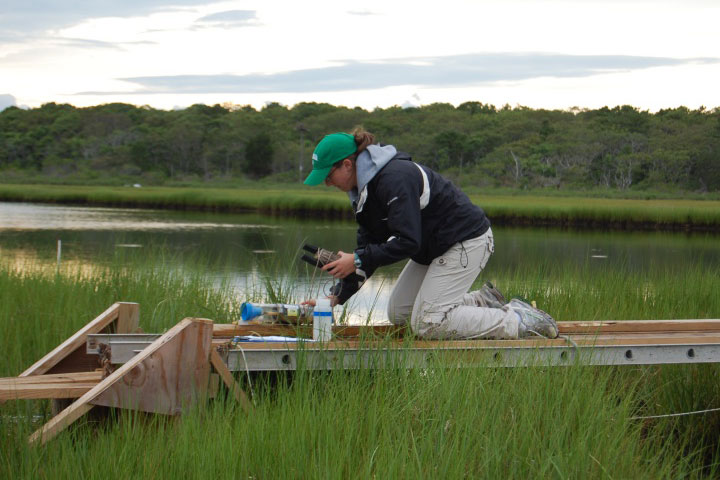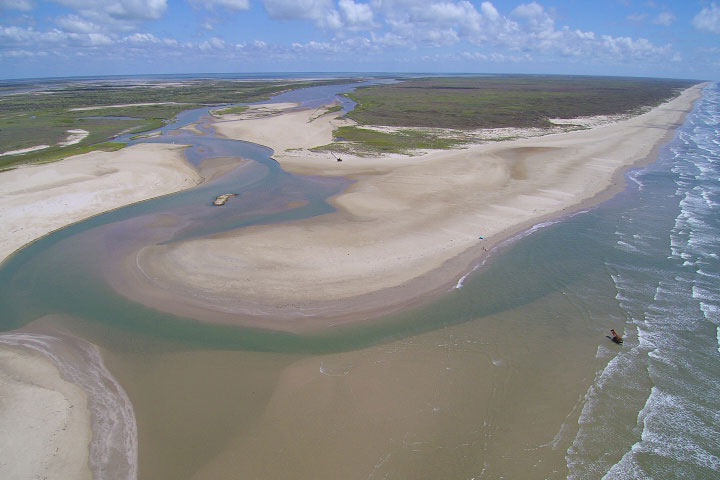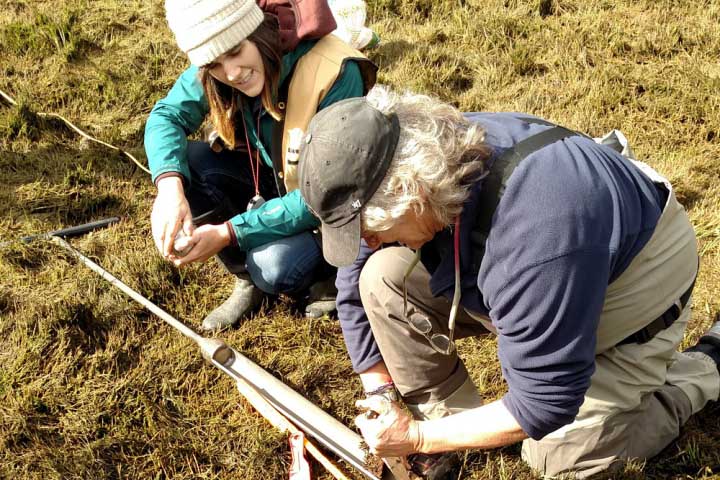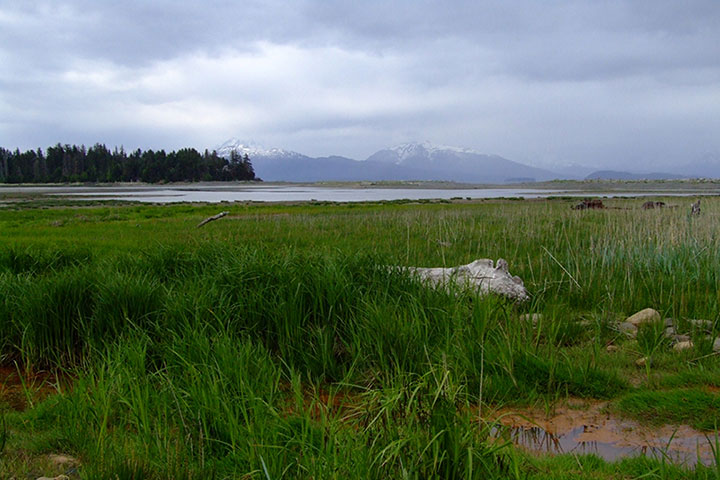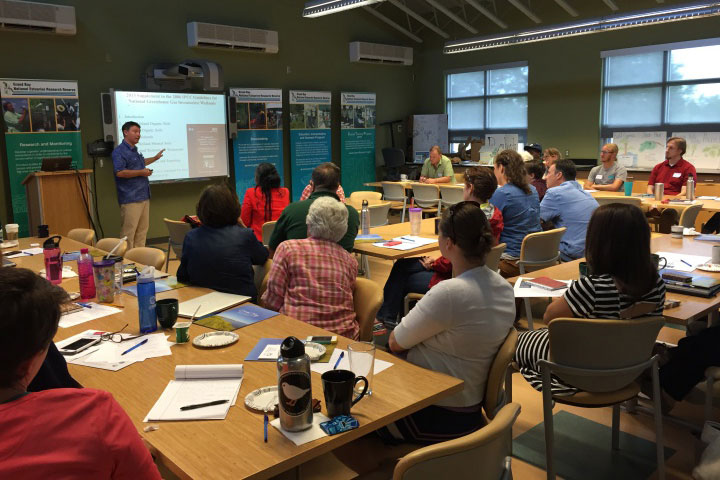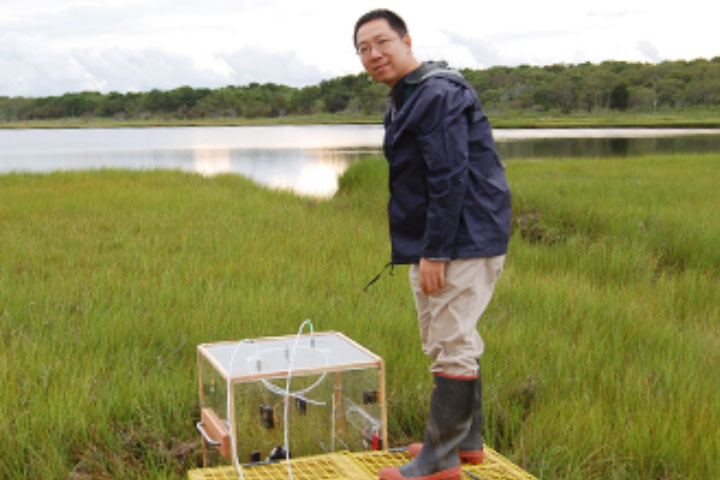Collections (beta)
Collections (beta)
These collections showcase interrelated NERRS Science Collaborative projects. Select a collection below the map to read more and see the map update with interactive elements.
Please use this Google Form to provide questions or comments on this page.
Click tiles below to display project collections. View project pages to learn more.
Blue carbon is the term for greenhouse gas carbon that is captured and stored by coastal ecosystems.
Coastal wetlands capture carbon dioxide from the atmosphere and permanently store carbon in wetland soils. This “blue carbon” service can be used to inform and incentivize wetland restoration; however, the science behind blue carbon and the role of carbon finance in support of coastal restoration and conservation are still emerging.
Since 2010, the National Estuarine Research Reserve System and its partners have worked to fill key information gaps and foster collaborations to advance the use of blue carbon for coastal wetland management. Projects have helped to quantify the carbon storage potential of coastal wetlands, predict greenhouse gas fluxes, and assess the market feasibility of using carbon offsets to support wetland restoration.
Panel Webinar (March 17, 2020): Advancing the Use of Blue Carbon for Coastal Systems
Assessing carbon stocks | Carbon stock assessment involves quantifying the amount of carbon that is stored in wetland soils and contained in plants, above and below ground. This carbon stock information is critical for quantifying the carbon storage potential of wetlands and predicting gas fluxes from the soil.
Quantify greenhouse gas emissions and carbon sequestration rates | Gases are continually being exchanged between soils and the atmosphere. Researchers have been measuring the flux of gases, such as carbon dioxide and methane, from different wetlands to better understand how restoration actions might impact the carbon storage of a wetland.
Identifying and engaging partners | Blue carbon opens up opportunities to address a variety of coastal challenges in innovative ways and engage diverse partners. An important lesson learned across all projects is the need to be thoughtful about when the concept can be applied, who to engage, and how.
Evaluating carbon market feasibility | Voluntary carbon markets offer an opportunity to financially support wetland restoration or protection projects, but the process for quantifying and putting a dollar value on a project’s carbon impact is data- intensive, complex, and requires verification. A feasibility assessment is the first step in considering a blue carbon offset project and informs project development.
Leading demonstration projects | In some cases, enough data and momentum exist for partners to advance blue carbon demonstration projects, which build on feasibility studies and follow approved carbon methodologies to show proof-of-concept.
Bringing Wetlands to Market Phase 2: Expanding Blue Carbon Implementation
During this second phase of the Bring Wetlands to Market project, the team developed a verified and generalized model that can be used across New England and the mid-Atlantic East Coast to assess and predict greenhouse gas fluxes and potential wetland carbon storage using a small set of readily available data. In addition, the team deepened their engagement with regional decision makers and expanded their high school blue carbon STEM curriculum resources. This project is included in both the Blue Carbon and K-12 Education collections.
Bringing Wetlands to Market Phase 1: Nitrogen and Coastal Blue Carbon
To help “bring wetlands to market,” the Waquoit Bay Reserve led a cutting-edge, collaborative research project in 2011 that examined the relationship among salt marshes, climate change, and nitrogen pollution, and developed tools to leverage blue carbon stored in wetlands to achieve broader management goals. As part a complement to this project, reserve educators developed a high school STEM curriculum module. This project is included in both the Blue Carbon and K-12 Education collections.





